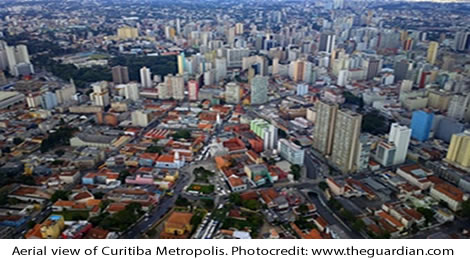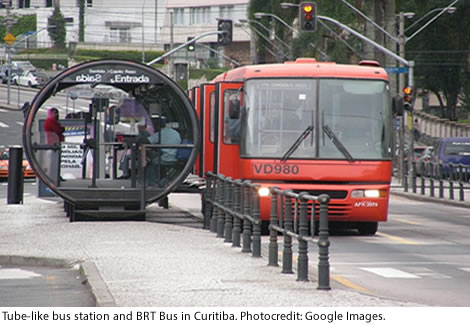Architecture In Our Urban Environments, Metropolis And Megacities.
Curitiba, The Capital of Bus Rapid Transport (BRT) System.
 |
as against the one- size- fits- all approach such as the clearing of shanty towns usually a favoured means adopted by most governments in developing countries to resolve issues associated with rapid urban development.
|
In architecture and urban planning, green has been the new black for a long time, apologies to our friends in the fashion industry as sustainability is now synonymous with design.
|
With political will at his disposal as mayor, Lerner, mindful of the lean resources available and the behemoth challenges faced by Curitiba as a burgeoning urban centre commenced the implementation of the 1968 Curitiba Master Plan using innovative and sustainable solutions.
|
 |
Asides from the introduction of the BRT System, Jaime Lerner also implemented social reforms, chief amongst which was an exchange programme that targeted the urban poor resident in shanty towns normally unserviceable by the municipal waste trucks. Waste from the slums are brought by the residents to designated collection points in exchange for groceries and BRT tickets thus ensuring that the slums are kept clean. Another socio- economical measure implemented was the use of ‘municipal sheep’ instead of the conventional tractors to keep the vegetation of Curitiba’s vast expanse of parks under control. The parks were created in areas susceptible to flooding. Proceeds from the sale of the municipal sheep wool are used to fund children’s programmes.
The list of Curitiba’s sustainable urban, geographical and social reforms which were initiated by Jaime Lerner in 1971 and remain till date is seemingly endless with the citizenry reaping the benefits- low crime rates, absence of street gangs, better quality of living, healthier environment, etc. Little wonder that he is a living legend. |
Curitiba’s public transport system infrastructure consists of concentric circles of local bus routes connected to five major radial routes that converge on the city centre. The 270 capacity custom made bi-articulated (three section) Volvo buses accounts for over 70% of daily travel. It is estimated that 1100 buses make 12500 trips ferrying more than 1, 600,000 passengers daily. This has evidently led to reduced vehicular traffic and atmospheric pollution.
|
Perhaps, sometime in the foreseeable future, besides utilization of the Bus Rapid Transport system (BRT) in Nigerian urban centres like Lagos, other geographical and social reforms that have positive impacts with minimal disruption to the urban environment as evidenced in Curitiba would be implemented.
|
